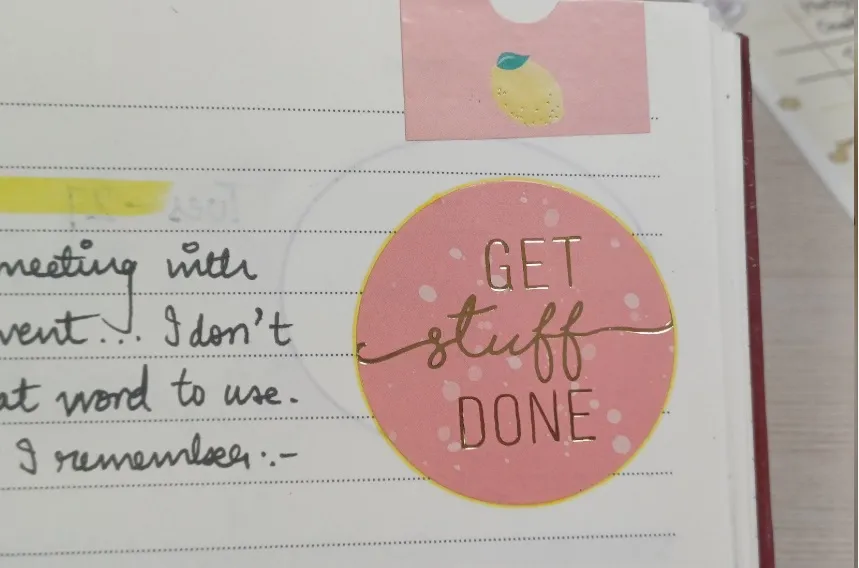If you’ve set up a bullet journal (BuJo) but find yourself staring at those blank pages, wondering what now, you’re not alone.
Creating a beautiful setup is one thing—but making it a habit that actually helps you organize your life? That’s where the real magic lies.
This guide will walk you through how to use a bullet journal effectively, so it becomes your go-to tool for managing tasks, goals, and reflections—without the overwhelm.
What You’ll Learn from This Blog
What Is a Bullet Journal, Really?
Before we dive into usage, let’s quickly revisit the core idea.
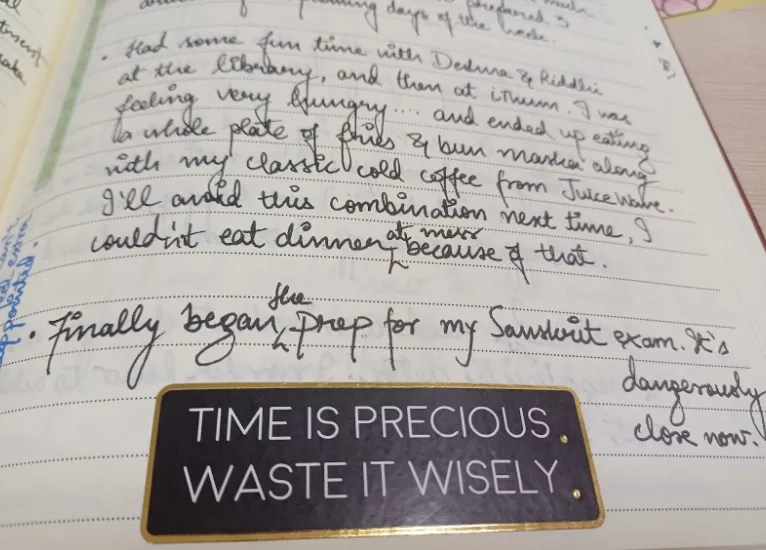
A bullet journal is more than just a notebook. It’s a customizable system for organizing your thoughts, to-dos, goals, and life events using rapid logging, a shorthand method using symbols like bullets, dashes, and signifiers.
It was invented by Ryder Carroll as a flexible system for tracking the past, organizing the present, and planning for the future.
If you’re wondering how to write a bullet journal or how to start a bullet journal for beginners, remember: there’s no one-size-fits-all approach.
Key Components You’ll Actually Use
The traditional bullet journal includes:
- Index – Your BuJo’s table of contents. Learn how to make a bullet journal index to keep things organized.
- Future Log – Long-term planning.
- Monthly Log – Overview of the month. Explore how to bullet journal for month to plan ahead.
- Daily or Weekly Logs – Your main space for daily tasks, events, and notes. If you want to see your week at a glance, try how to layout bullet journal for weekly spreads.
- Collections – Custom pages for tracking goals, books, expenses, mood, habits, etc. You can create a tv show tracker bullet journal, a mood tracker bullet journal, or even a habit tracker (see how to do a habit tractor in a bullet journal).
If that sounds like too much, don’t worry, you don’t have to use everything. The power of bullet journaling is in adapting it to your life, whether you want to make your own bullet journal or use a bullet journal app.
Step-by-Step: How to Use a Bullet Journal Daily
1. Start with a Daily or Weekly Log
Once your bullet journal is set up, your daily or weekly logs are where you’ll spend the most time. For a daily log, each morning (or the night before), write down the date and log:
- Tasks (- ): Write tasks as short bullets.
- Events (○): Mark upcoming or past events.
- Notes (–): Quick ideas, reminders, or insights.
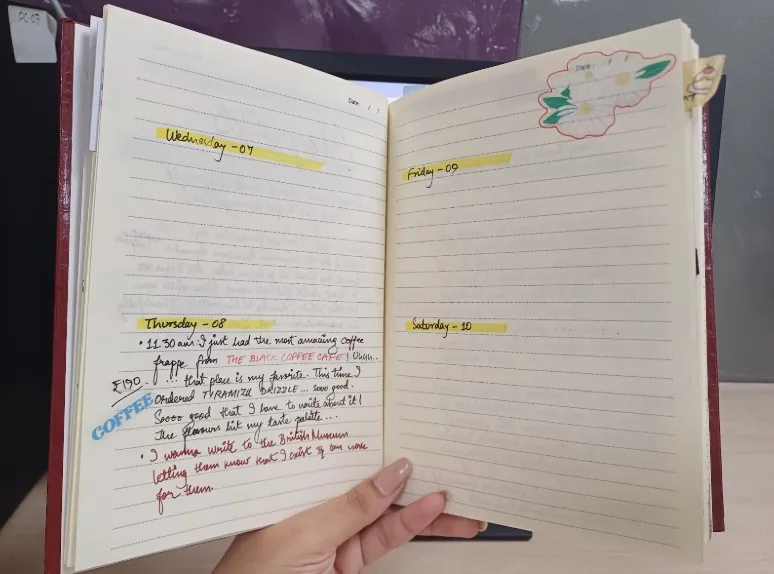
If you’re new, try how to start a simple bullet journal or how to bullet journal in a planner for a straightforward approach. For a creative touch, explore how to decorate bullet journal with washi tape (see how to use washi tape in bullet journal) or how to draw banners for bullet journal.
Tip: Don’t overplan. Use your BuJo as a tool, not a chore.
2. Migrate Tasks Regularly
One of the core BuJo techniques is task migration. If a task isn’t completed today, decide:
- Is it still relevant? Migrate it to tomorrow.
- No longer important? Strike it out.
- Important but not urgent? Move it to your monthly or future log.
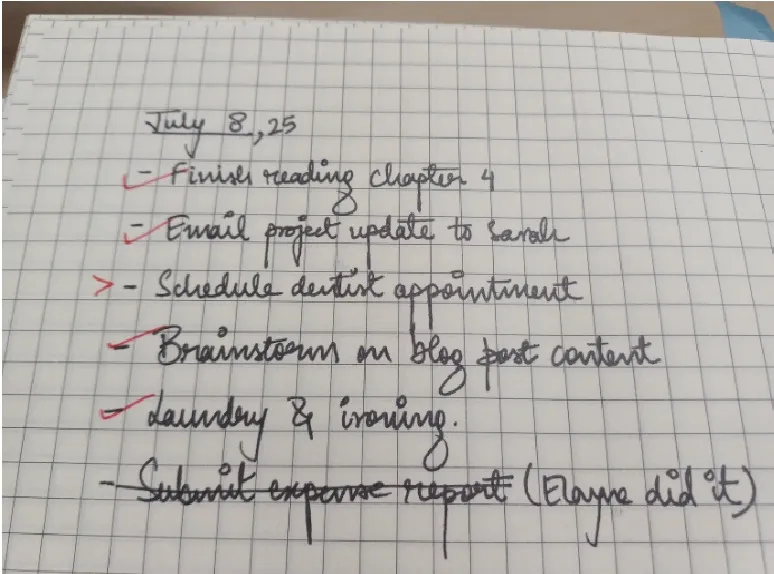
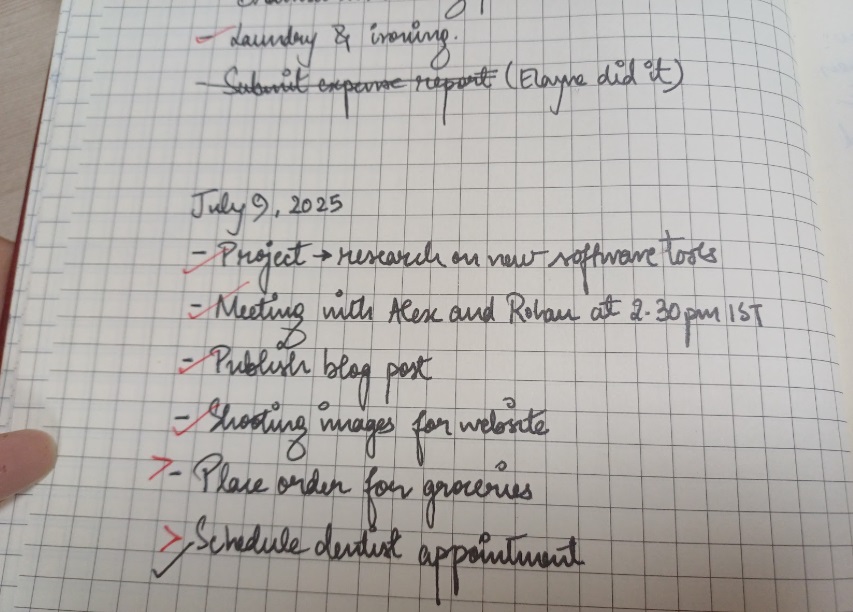
This keeps your BuJo clutter-free and focused on what matters now. If you’re using digital tools, learn how to make a digital bullet journal or how to create a digital bullet journal with Evernote.
3. Use Signifiers to Prioritize
Level up your bullet journal by using signifiers next to tasks:
- ★ = priority
- ! = inspiration or big idea
- ? = needs more research
Or simply use a highlighter to signify your priority tasks. For a creative boost, try how to write bullet journal calligraphy or how to draw bullet journal headers.
4. Use Collections Intentionally
Instead of random sticky notes or apps, use your BuJo to track and reflect. These are called collections, dedicated pages for specific themes. Some ideas:
- Habit tracker
- Budget tracker
- Books to read / Movies to watch
- Gratitude log
- Health or fitness goals
- Project planning (see how to use bullet journal for project management)
Start small. You don’t need every collection from YouTube or Pinterest—just the ones that genuinely help you. If you’re a student, check how to set up a bullet journal for school.
For work, see how to use bullet journal for work or how to take meeting notes in bullet journal.
5. Review Weekly and Monthly
At the end of each week and month:
- Review what you completed.
- Migrate or cancel tasks.
- Reflect on wins, struggles, or surprises.
- Update your future log with anything upcoming.
This review process is what transforms your bullet journal from a planner to a personal growth tool.
Make It Work for You
The beauty of a bullet journal is that there are no rules. If something doesn’t work for you, change it.
Allow yourself to write as you feel like that is your natural instinct telling you what you need to declutter your brain and organize thoughts. Your BuJo is a living system that evolves with you.
Prefer a minimalist bullet journal? Stick to basic bullets and logs (see how to start a minimalist bullet journal).
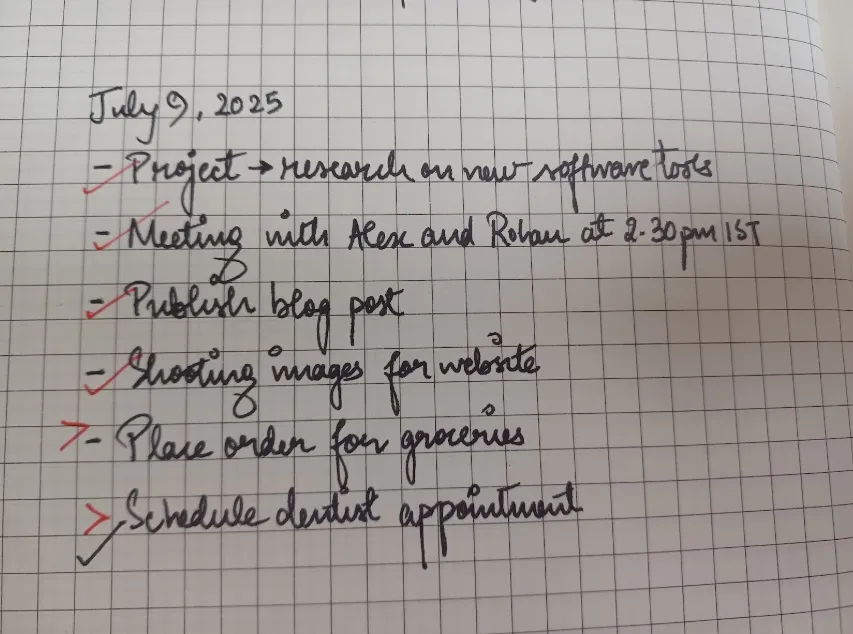
Like creative journaling? Add washi tapes, drawings, or color codes (see bullet journal doodles how to).
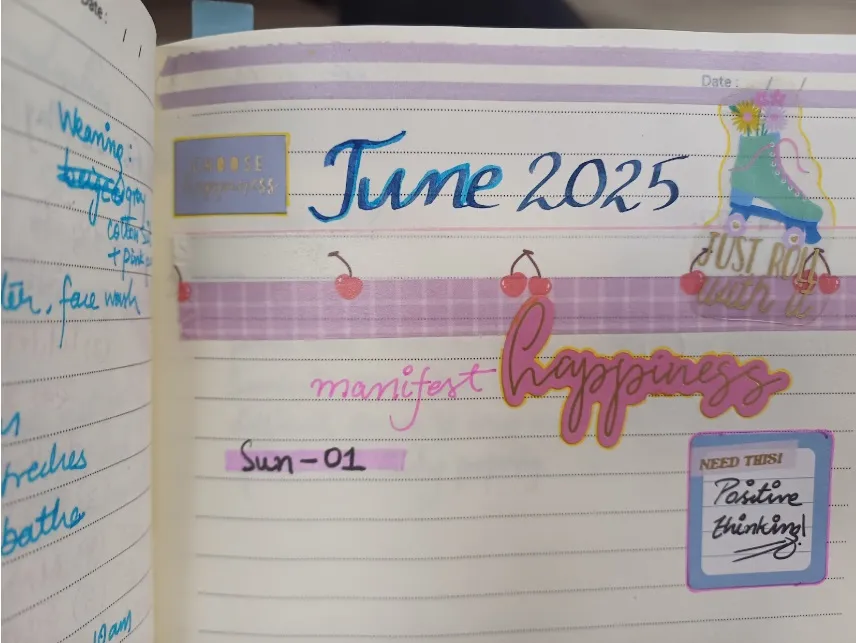
Want functionality only? Skip the decor—focus on flow and clarity.
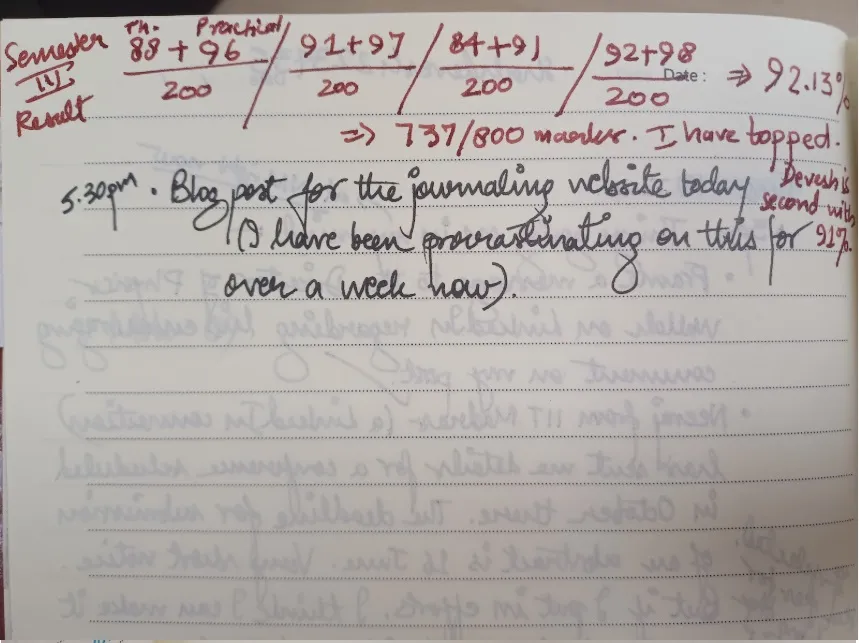
Your bullet journal is yours—no pressure to make it pretty or perfect. If you want to decorate your bullet journal cover or decorate first page of project bullet journal, go for it!
If you want to write quotes in a bullet journal or put your ideas in bullet journal, do what feels right.
Common Mistakes to Avoid
- Trying to copy others’ setups exactly – Inspiration is great, but you need a system that fits your life.
- Overcomplicating layouts – Start simple. Complex spreads can become overwhelming.
- Not reviewing regularly – Without review and migration, your BuJo can become outdated fast.
- Feeling guilty for skipping days – It’s okay. Pick up where you left off. Bullet journaling is forgiving.
Pro Tips & Advanced Ideas
- How to maintain a bullet journal: Set a regular time for updates and reviews.
- How to make a bullet journal on lined paper: Use the lines as guides for neat spreads.
- How to make a bullet journal in keynote or on phone/android: Use digital tools for flexibility.
- How to make a key for a bullet journal: Dedicate a page to your symbols and signifiers.
- How to combine bullet planner with personal journal: Mix logs with reflections.
- How to use bullet journal printables: Print templates to save setup time.
- How to use Trello as a bullet journal: Digital boards can mimic BuJo layouts.
- How to add pages to bullet journal: Use washi tape or glue-ins for extra space.
- How to draw a calendar in a bullet journal: Sketch simple grids for monthly overviews.
- How to keep yourself motivated to follow bullet journal: Make it enjoyable and rewarding.
- How to write neat in a bullet journal: Practice and use guides for handwriting.
- How to improve your handwriting bullet journalbullet journal: Try calligraphy drills and slow down.
- How to start a bullet journal to achieve goals: Dedicate collections to goal tracking.
- How to use a bullet journal for weight loss: Track meals, workouts, and goals.
Also Read:
Final Thoughts
Knowing how to use bullet journal is about more than filling in pages. It’s about building awareness, staying organized, and designing a system that brings value to your daily life.
So whether you’re managing deadlines, building habits, or just trying to keep track of your mental load, your bullet journal can be your best personal assistant—if you use it right.
Ready to get started? Flip open your BuJo and set up today’s log. Just one line is all it takes to begin.

